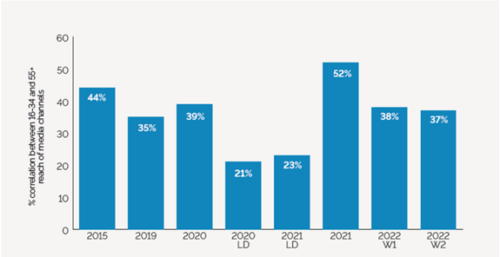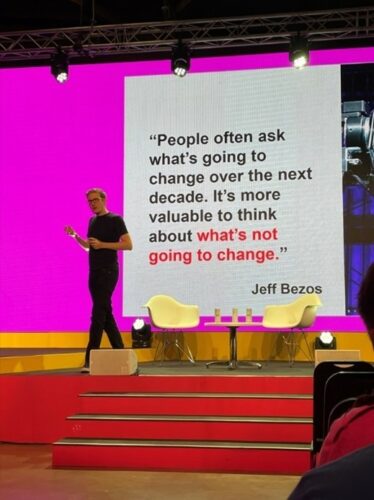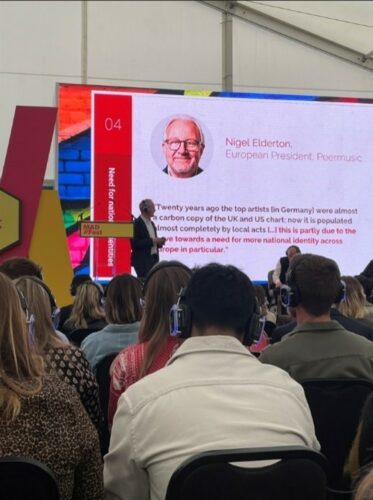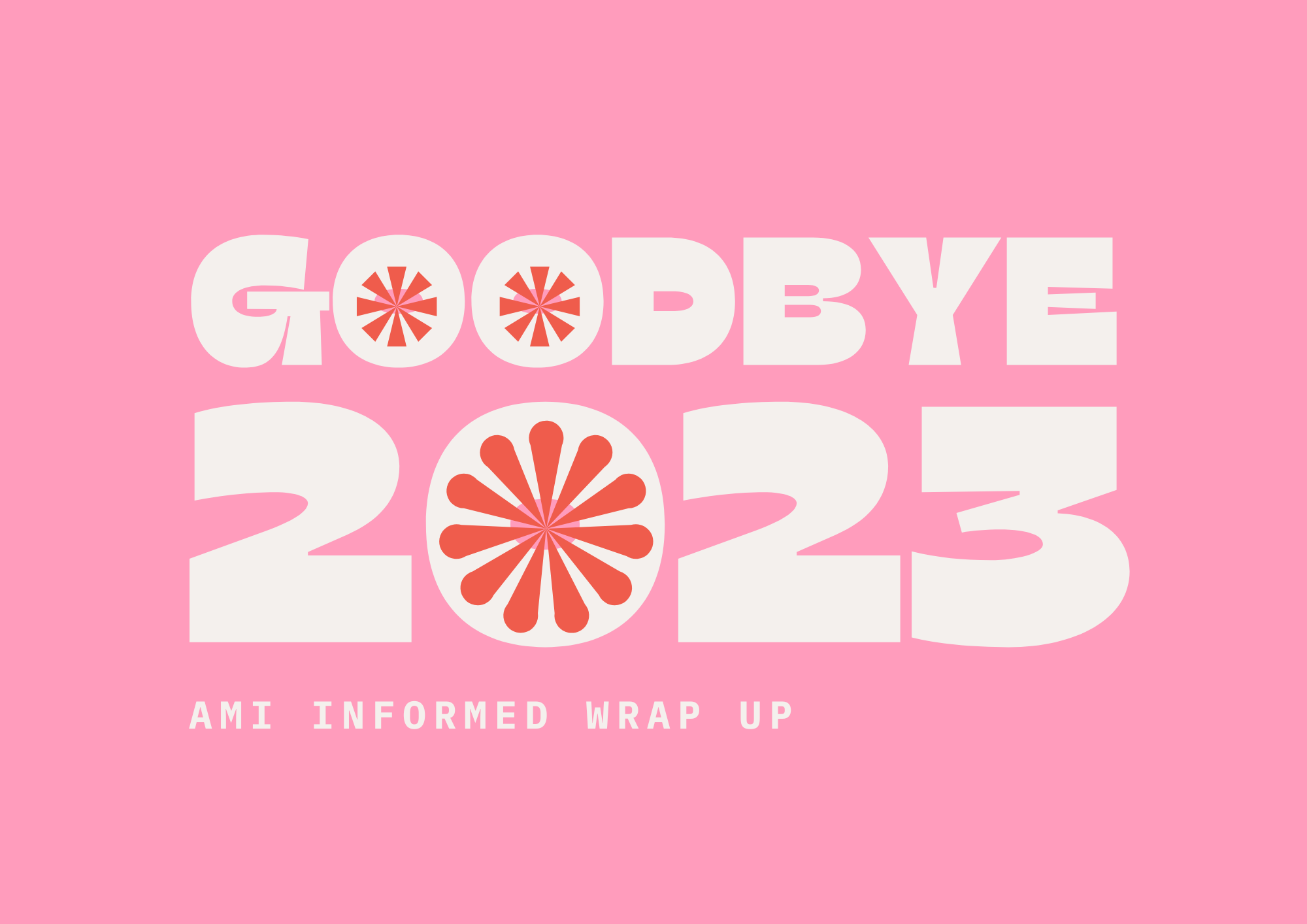We have been writing our newsletter, called ami:INFORMED, for a year now, where we highlight marketing stories on best practice, innovation and regulation. We direct you to relevant research, case studies and thought-provoking opinions that challenge our know-how, mould perspectives and help us deliver better work.
Here, we have selected our favourite stories from the entire year’s worth of creative, academic, and cultural work.
📉Is thinking that we are in a recession as good as actually being in one?
When does a recession start? Is it when the economists say it does or when the people feel it does? From advertising perspective, it is probably the latter. Nielsen produced a 2023 consumer outlook report, which pays extra attention to what consumers felt comfortable with spending in 2023 and how it changes based on their financial situation. Note that a whopping 84% of Brits thought the country was already experiencing a recession despite officially this not being the case. It is helpful to think how these sentiments change the bigger picture of consumer behaviours, perceptions, and brand expectations.
📺Covid media habits are reversing
IPA has found that media habits gap between generations is widening again. This reverses covid times behavioural trajectory where older generations started using more digital channels. We can say now that this happened out of need rather than because of a genuine long term habit change. And although everyone moved their life online for a few years, even younger generations are currently more conscious of their time online, as exemplified by digital detox and pre-digital nostalgia trends. Check out the article for some age-specific nuggets of insight around media channels.

📰 Magazines are the original influencers, but do they have a future too?
Dirt on their take on culture included some interesting thoughts on where the creator economy is going and what magazines have to do with it all. In their view, the creator landscape is full of echoes as influencers started copying content-focused growth strategies from one another. Meanwhile, the taste making is in an increasingly good position to become monetised – something that magazines are especially good at.
💬 The trends that do not change…
Matt Klein wrote an article on the real trends right now, based on Reddit data. Real, because a lot of the trends marketing tend to focus on are momentary fads that disappear after a few weeks because they were only happening on social media in the first place. He is encouraging us to look at the human behind the trend and lists 5 longer-term trends that matter. A highly enjoyable read.
🎤…and how the unchanging trends can tell the future
In the summer, we visited MadFest, and although it is near impossible to try and say what part was the best, I managed to narrow it down to one session. Anticipating the Future Normal with Henry Coutinho-Mason tells you that change is everywhere, but you should be asking instead what is not going to change. Insight, beautifully put together!


💡Planning campaigns around the inevitability of forgetting
Brands are memory structures, but how do we make memories? Faros Yakob in his article for WARC discusses how we should approach marketing that maintains memory when psychology teaches us that forgetting curves are inevitable. To start with, maybe keep the same ads running for longer.
🎓All you need to know about campaign attribution and its falacies
This is a detailed explanation from Les Binet on the different fallacies of campaign attribution. TL;DR: digital attribution is inaccurate, if you trust technology to tell you how your campaigns worked without your marketing hat on you will be missing the bigger picture, and no measurement is 100% accurate anyway so incorporating different tactics is important. The full article here and it is incredibly useful.
🥱A dull ad ends up being a more expensive one
Research shows that dull ads are costly ads, especially if you have low campaign budgets. This boils down to the fact that mediocre ads do not inspire people to want to pay attention, and therefore it costs more to expose a user to your ad: “The road to tedium is paved with good intentions: no one consciously wants to be dull but corporate metrics will often push marketers down that path; and if dull is the category norm it can be difficult to take risks.” More on this here.
🃏Recessions have a tendency to birth new villain characters in culture. Who do we hate now?
Have you noticed an increase in movies and other cultural assets that either mock the rich or position them as villains (e.g., White Lotus, Triangle of Sadness, Glass Onion, etc)? This aesthetic has a name: Eat The Rich. Cultural analysts have started to take a broader view of why it is happening and how it is affecting consumer moods and actions. This on-demand webinar from Contagious provides some context and food for thought.
TL;DR:
- economic situations have been mirrored in the villain characters
- the focus has shifted from an evil corporation (the image born during the 2008 financial crisis) to an evil rich person
- this is leading to a Post-Bourgeoisie zeitgeist which focuses on raising middle-/ working- class representation in culture… but what is trendy gets cosplayed, too
- political and cultural narratives have started focusing on the needs of everyman
- what it means to authentically and non-performatively participate in this movement by brands (Burger King Mexico example here).
🏡 The homogenisation of built environments and the virtues of building beautifully
There are so many words to describe the incessant homogenisation of every aspect of our lives: McUrbanism, AirSpaces, non-place, moodboard effect, blanding, simulacrum, Instagram face, wind tunnel effect… we can keep going. The most obvious example is the homogenisation of our built environment. Have you stopped and noticed that a local café in London might look eerily similar to a café in Tokyo? Or why a glass office tower in Thailand resembles that in Bulgaria?
This article is a fascinating overview of the different manifestations of this phenomenon, its influencing factors and how en-masse homogenisation creates easy opportunities for any brand to stand out. If you want to dive deeper, also read this interview with Thomas Heatherwick, an architect who designed the 2012 Olympic cauldron, where he talks about humanising the built environments. TL;DR: the solution is simple – whatever you create, create it beautifully.
🎨 The BEST marketing camapign (according to us)
Despite Barbie headlining every marketing event in 2023, Fiat had in many ways the strongest case study: their Operation No Grey campaign.
Fiat had a problem: they were the first-choice brand in Italy but only a contender on the global market, meanwhile in the coming years Asia will be ramping up competition in car manufacturing. To stand out, Fiat took the road less travelled and focused on breaking as many marketing rules as possible within the 30s ad spot. The campaign idea was based on the psychology of identity formation – children say no to form a non-identity at the same time as they shape an understanding of who they are. Fiat, too, carved a new identity for themselves by saying no:
- Instead of saying who they are, say who they are NOT (while completely dismissing all of their competitors within the first seconds of the ad)
- Tell what they DO NOT DO
- NO grey cars anymore (the most popular type of car)
- REFUSE to glorify the product (vandalising it by dumping it into a can of orange paint with their actual CEO inside)
- NOT showing the product in motion (a no-no for a car brand)
I encourage you to watch the ad with this in mind, it is really quite brilliant and a perfect case study for a brand refresh.
Love our work? Let us know
We hope these stories helped to educate and inspire you. Let us know if you have a particular interest in a topic that we have not covered, and we will make sure to include it next time.


